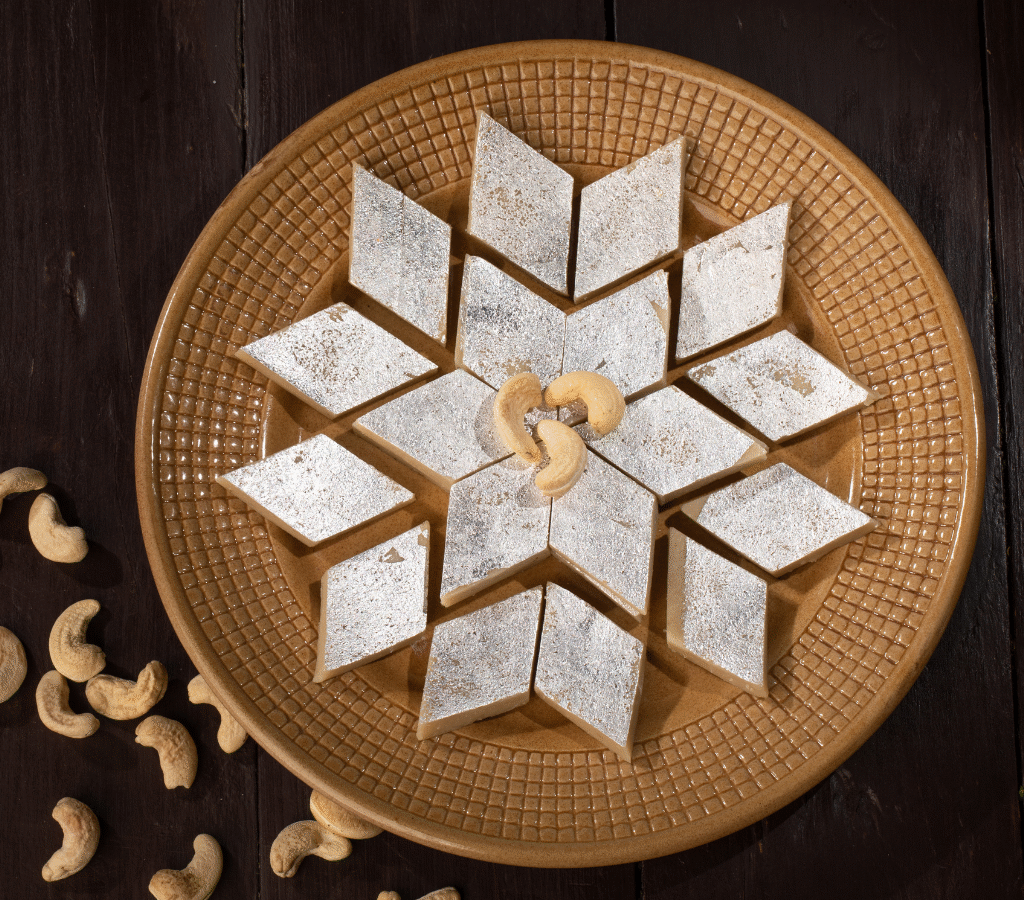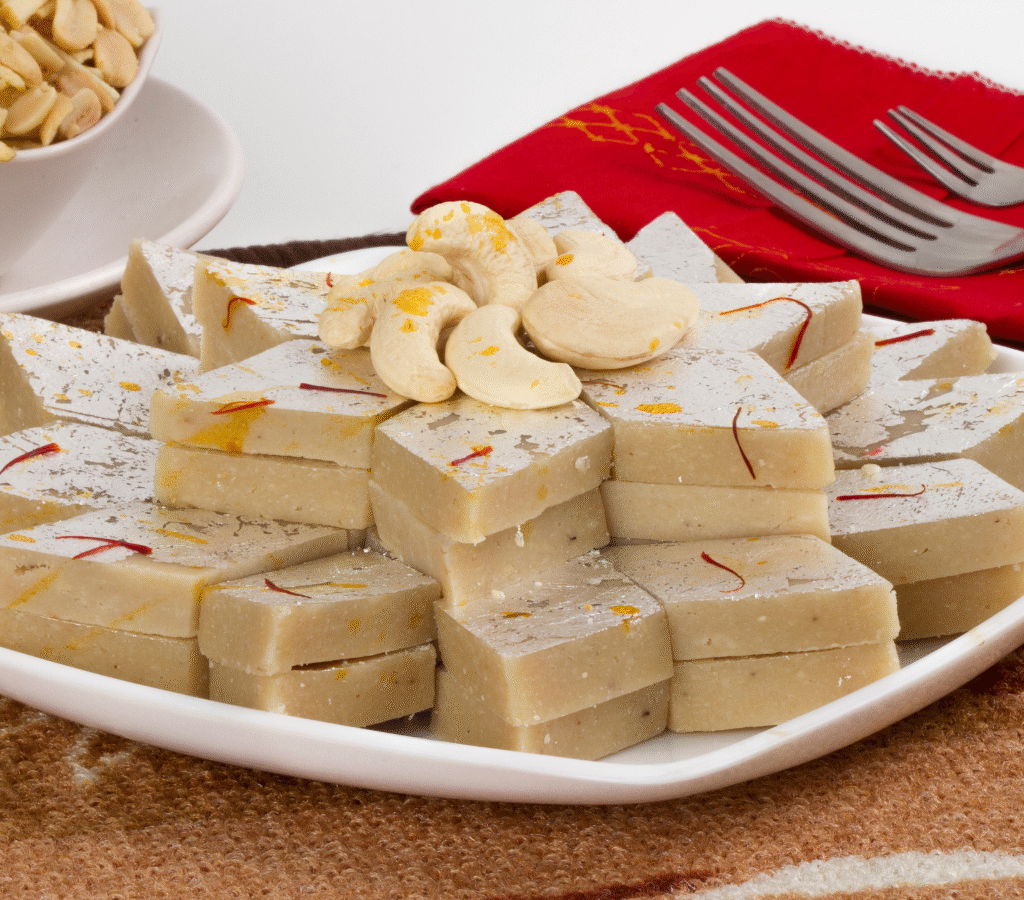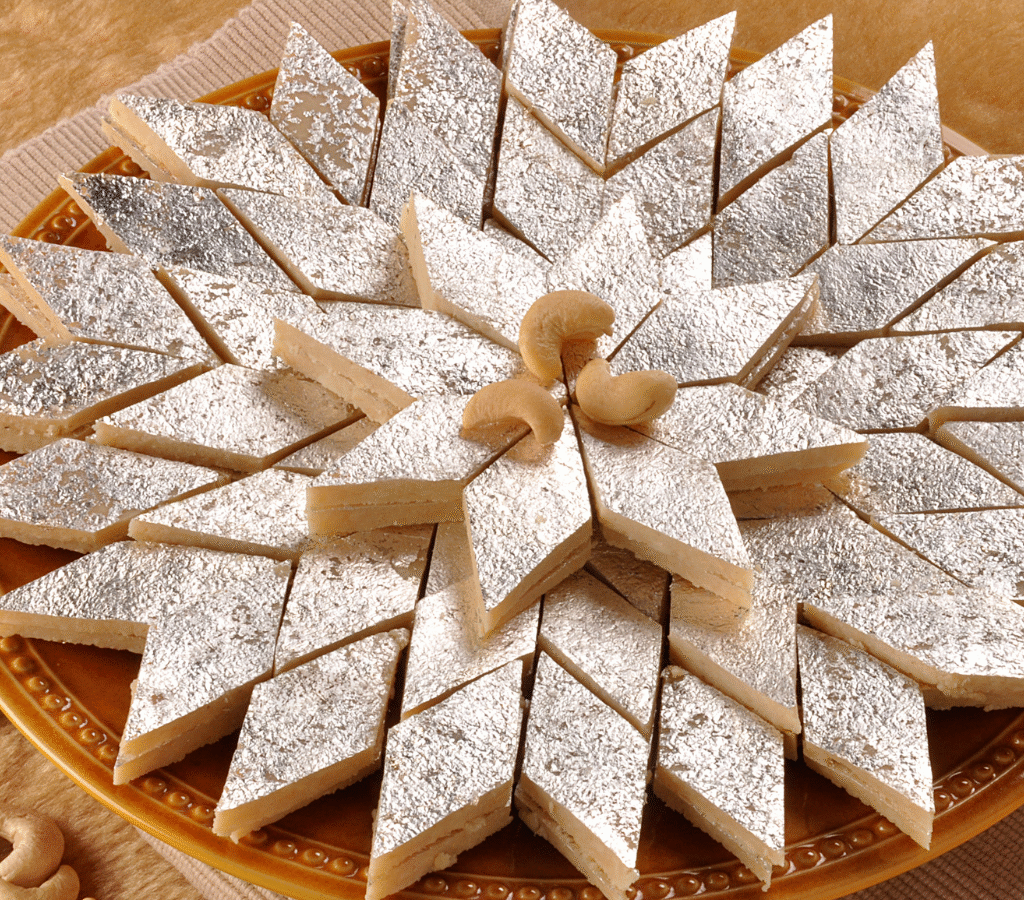India’s vibrant culture and rich traditions are often best expressed through its food—especially its sweets. Among the pantheon of beloved Indian desserts, Kaju Katli, also known as Kaju Barfi, holds a special place. With its melt-in-the-mouth texture, delicate cashew flavor, and hint of cardamom, Kaju Katli is a festive favorite—present at weddings, Diwali, Raksha Bandhan, and many other celebrations.
But beyond the glossy boxes stacked in sweet shops, lies the surprisingly simple yet nuanced process of making Kaju Katli at home. This article takes you through everything you need to know: from the ingredients and equipment, to tips, techniques, and the step-by-step process to create this iconic sweet in your kitchen.

What is Kaju Katli?
Kaju Katli literally means “cashew slice” in Hindi. It’s a no-bake Indian fudge made primarily from cashew nuts and sugar, flavored lightly with cardamom or rose water, and traditionally topped with edible silver leaf called vark.
Unlike many Indian sweets that use milk or ghee, Kaju Katli is unique for its dairy-free, gluten-free composition, making it a relatively “lighter” mithai. The charm lies in its soft, chewy texture and pure, nutty taste.

Ingredients for Kaju Katli
Making Kaju Katli requires only a handful of ingredients:
- Cashew nuts (Kaju) – 1 cup (about 150 grams)
- Sugar – ½ cup (100 grams)
- Water – ¼ cup (60 ml)
- Cardamom powder – ¼ teaspoon (optional)
- Ghee (clarified butter) – 1 teaspoon (for greasing)
- Edible silver leaf (varak) – optional, for decoration
Notes on Ingredients:
- Use whole, unroasted cashews for best results. Roasted or salted cashews will alter the taste and texture.
- If you’re vegan or avoiding ghee, you can grease your surface with neutral oil instead.
- You can flavor Kaju Katli with rose water or saffron, but traditionally, it’s left subtly flavored.

Equipment You’ll Need
- A heavy-bottomed non-stick pan
- A food processor or dry grinder
- A spatula for stirring
- A flat rolling pin
- Parchment paper or butter paper
- A sieve (optional but recommended)
- A sharp knife or pizza cutter for slicing
Step-by-Step Recipe: How to Make Kaju Katli at Home
Let’s dive into the process in detail.
Step 1: Grind the Cashews
- Ensure the cashews are completely dry.
- If you store them in the fridge or freezer, bring them to room temperature before grinding. Moisture can cause clumping.
- Grind the cashews in a food processor or dry grinder.
- Pulse in short bursts to prevent the nuts from releasing oil. You’re aiming for a fine powder, not a paste.
- Sift the powder through a sieve to remove coarse bits, and grind them again.
Tip: Do not overgrind, or the cashew powder will turn into nut butter.
Step 2: Make the Sugar Syrup
- In a non-stick pan, add ½ cup sugar and ¼ cup water.
- Heat on medium flame, stirring until the sugar dissolves.
- Once dissolved, boil for 1 string consistency.
What is One-String Consistency?
Take a drop of syrup between your thumb and index finger and pull gently—if it forms a single thread, you’ve reached the correct consistency.
Tip: If you’re unsure, err slightly on the lower side; overcooking the syrup can make the final dough crumbly.
Step 3: Add Cashew Powder
- Lower the flame and gradually add the cashew powder to the syrup.
- Stir continuously to avoid lumps.
- Keep stirring for 8–10 minutes, or until the mixture begins to leave the sides of the pan and forms a dough-like mass.
Tip: Do not overcook. As soon as the mixture thickens and you can gather it into a ball with the spatula, it’s done.
Step 4: Knead the Dough
- Transfer the hot mixture onto a greased parchment paper or clean surface.
- Let it cool for a minute or two until it’s warm enough to handle.
- Apply a little ghee or oil to your hands and knead the dough until smooth.
Tip: Kneading is crucial for that glossy, soft texture. But don’t overwork it—it should be pliable, not dry or oily.
Step 5: Roll and Cut
- Place another parchment paper on top of the dough.
- Roll it out evenly to about ¼ inch thickness.
- Remove the top sheet and apply silver leaf (if using).
- Cut into traditional diamond shapes using a sharp knife or pizza cutter.
Read also: How to make Khaman Dhokla?
Storage Instructions
- Store Kaju Katli in an airtight container at room temperature for up to 7 days.
- For longer shelf life, refrigerate in a sealed container for up to 2 weeks. Bring to room temperature before serving.
Tips and Troubleshooting
Here are some common issues and how to fix them:
| Problem | Cause | Solution |
|---|---|---|
| Mixture too dry or crumbly | Overcooked syrup or mixture | Add 1–2 tsp warm water and knead again |
| Mixture too soft/sticky | Undercooked syrup | Cook again for 2–3 minutes |
| Dough sticks while rolling | Not enough ghee or parchment paper | Use greased paper and roll gently |
| Rough texture | Cashews not ground finely | Sift and regrind coarse particles |
Variations You Can Try
While the traditional Kaju Katli is a timeless classic, here are some creative twists:
1. Chocolate Kaju Katli
- Add 2 tablespoons of cocoa powder during the cashew mix step.
2. Rose Kaju Katli
- Replace cardamom with rose water and a few drops of natural pink color.
3. Pistachio Kaju Katli
- Mix in ¼ cup pistachio powder with cashews for a greenish tint and nutty variation.
4. Kesar Kaju Katli
- Soak a few strands of saffron in warm water and add it to the sugar syrup.
Why Make Kaju Katli at Home?
There are several good reasons to try making Kaju Katli at home:
- Purity: Commercial sweets sometimes contain additives, fillers, or excess sugar.
- Freshness: Nothing beats the taste and aroma of freshly made Kaju Katli.
- Customization: Adjust sweetness, flavors, and textures to your liking.
- Gift with love: Homemade sweets make heartfelt gifts during festivals and occasions.
Cultural Significance of Kaju Katli
Kaju Katli is more than just a dessert. It’s a symbol of celebration, often the first sweet offered during Diwali or given as a gift during Raksha Bandhan. Its elegant look and balanced sweetness make it suitable for all age groups and a go-to for festive assortments.
In Indian households, gifting a box of Kaju Katli signifies respect and good wishes. For many, it’s the first sweet they reach for in a mithai box—a testament to its enduring popularity.
Final Thoughts
Kaju Katli is a deceptively simple sweet that embodies the essence of Indian mithai—minimal ingredients, maximum flavor, and rich tradition. Once you master the sugar syrup consistency and get comfortable kneading the dough, you’ll find it’s a surprisingly easy and rewarding sweet to make at home.
So the next time you crave that delicate, nutty delight, skip the store-bought box. Put on your apron, grab a handful of cashews, and craft your very own batch of Kaju Katli—made with precision, love, and a little bit of Indian magic.
Happy cooking—and even happier celebrating!
If you’d like a printable version of this recipe or a step-by-step photo guide, let me know!Attach
Search
Study
